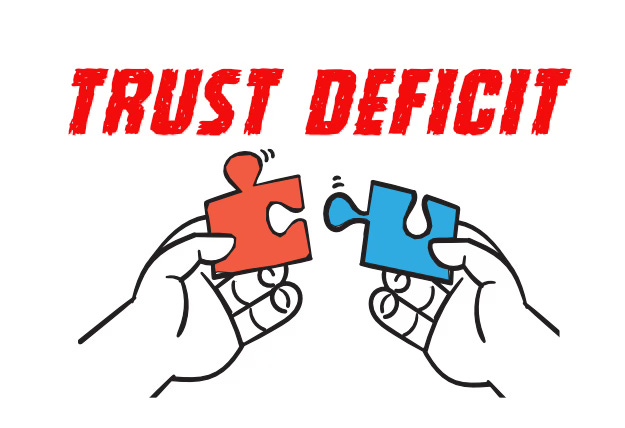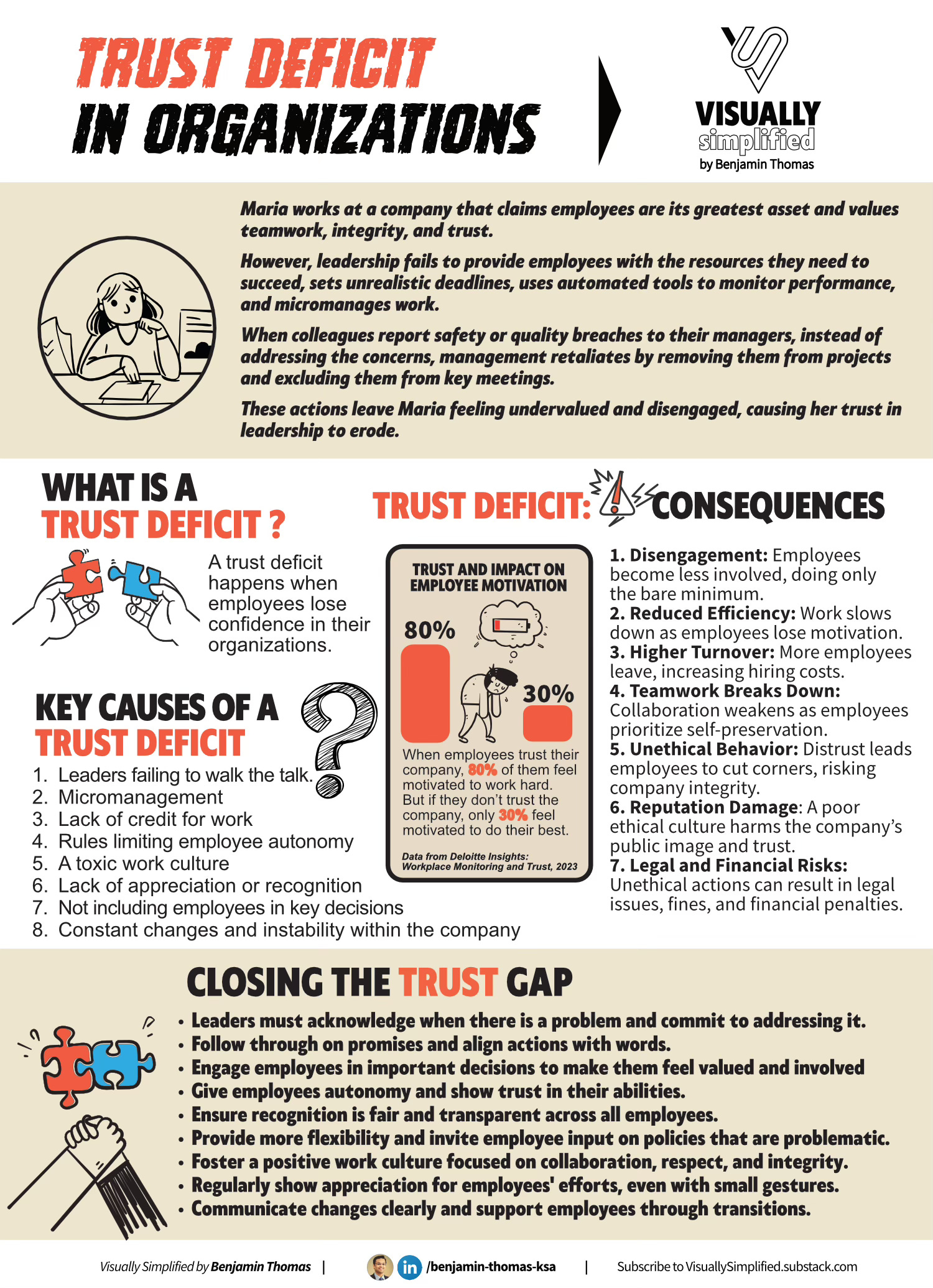Visual 018: Trust Deficit in Organizations
Over the years, several high-profile companies have demonstrated how a breakdown in trust between employees and leadership can have far-reaching consequences.
At Boeing, engineers flagged safety concerns with the 737 Max, but leadership, focused on meeting production goals, sidelined these warnings. The tragic outcome not only cost lives but also destroyed the trust employees—and the public—had in the company.
At Wells Fargo, employees were pressured to meet unrealistic sales targets, leading to widespread unethical practices like the creation of unauthorized accounts. Leadership ignored employee concerns, and those who resisted were often penalized, causing long-lasting reputational damage.
Uber’s toxic work culture is another example, where leadership’s failure to address harassment and unethical behavior eroded trust within the company. Employees who raised concerns were often ignored, leading to a work environment where people no longer felt valued or heard.
These cases illustrate how a trust deficit—whether caused by micromanagement, lack of recognition, exclusion from decision-making, or unethical practices—can undermine an organization. When leadership’s actions don’t align with their stated values, trust erodes, employee engagement plummets, and company culture suffers. But what are the root causes of a trust deficit, and how can organizations close the gap?
To better understand how trust deficits develop and what steps leaders can take to restore trust, check out the infographic below, which breaks down the key causes, consequences, and solutions for closing the trust gap in organizations.




